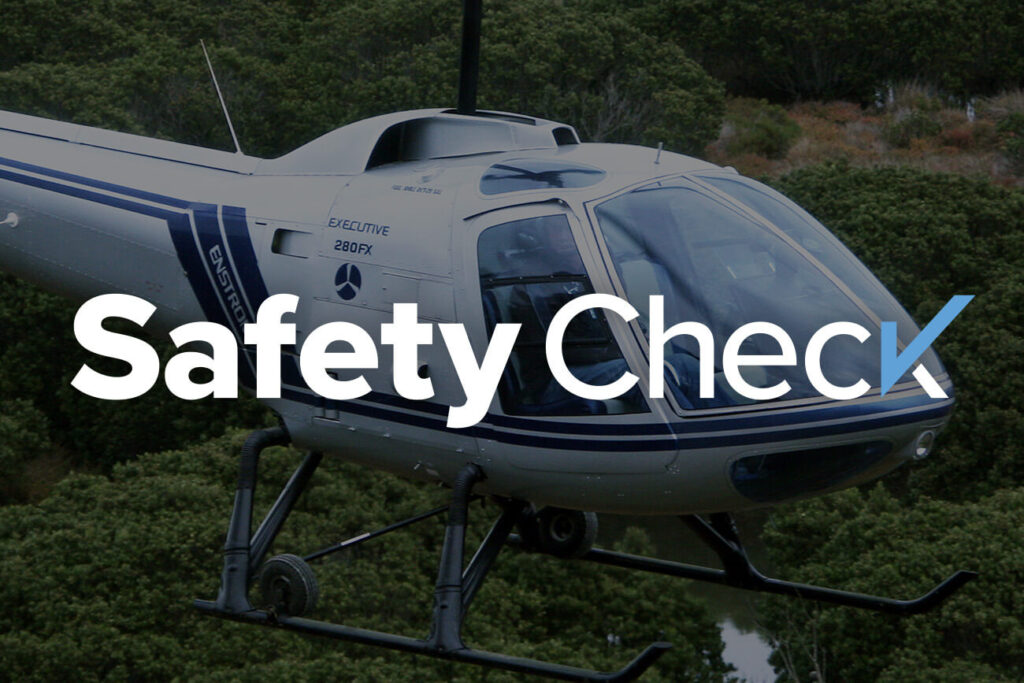Safety Check: Dangers of Rotor Downwash

Whenever you transition from a rotorcraft-friendly airport to a more rural environment, you’re bound to experience a few growing pains. A good friend compared the initial presence of a new helicopter as a “bull in a China shop.”
The biggest challenge? Managing rotor downwash. Rotor downwash is a byproduct of a rotor disc generating thrust. Air is drawn in from above the disc and accelerates downward. The more upward thrust, the more downwash.
Just this year, my pilot friend pointed to three near-disasters all related to rotor downwash. The first came on a cold, wintery day. The pilot had just lifted from the ramp located near the FBO’s side entrance. He started a slow hover taxi to the nearby taxiway for departure. But, as the aircraft passed the terminal building, a group of unsuspecting airport guests were pelted with flying pellets of ice and snow. No one was hurt, but it certainly wasn’t the welcome guests were expecting.
Less than a week later, a different crew in the same aircraft taxied by a based Robinson R44 sitting on the FBO’s ramp. The owner/pilot of the local helicopter flight school saw the approaching aircraft and quickly grabbed hold of the R44’s open door. He told me it took every ounce of strength he had to keep it from being blown off the helicopter.
My pilot friend recognized something needed to change, so he implemented a mandatory vertical take-off policy for helicopters stationed at the airport. It required pilots take off vertically and climb to 150 feet before transitioning to forward flight.
Even with the new policy, the helicopter ran into trouble again during a fuel stop at Fort Wayne’s Smith Field, where the ramp is often full of general aviation aircraft. The airport authority’s on-duty line technician attempted to marshal the aircraft in between multiple training airplanes, when suddenly, the downwash lifted the nose of a Diamond DA20 and forced the tail section down into the unforgiving asphalt.
Understanding how rotor downwash works can help mitigate the dangers it might pose to people or property. Jop Dingemans, an HEMS Captain and Aerospace Engineer, has a great article on this titled, “Understanding Rotor Downwash: The Ultimate Pilot Guide.” He goes into detail about how disc loading and air density determine the strength of rotor downwash.
The velocity of the downwash reaches its maximum at about 2 rotor diameters below the disc. The Enstrom 480B, for example, has a maximum downwash speed of about 45 knots. The FAA’s Rotorwash Analysis Handbook considers wind speeds above 30-40 knots dangerous for anyone or anything caught in it, which is why downwash is such a problem. You’ll notice this downwash effect the most when in a hover or slow hover taxi in ground effect.
It’s important to consider how far downwash spreads, and that can vary by a helicopter’s specific make and model. On average, you can expect the downwash to spread outwards in all directions at a distance of three times the rotor diameter. For a visual representation of how your helicopter’s downwash spreads, fly to a clear, grassy field and bring the aircraft to a 3-5 foot in ground effect hover. Carefully glance around you and consider how far away the grass blades are blowing. Then, vertically climb over the spot, taking note of how high you need to be before the grass blades are no longer disturbed. Typically, downwash begins to dissipate as you clear the highest treetops.
Now that you have a better idea how much downwash your helicopter generates, you should be able to make better judgments as to when an airport ramp is simply too crowded to safely land. When that appears to be the case, consider landing your skid-equipped aircraft in the “back forty,” or someplace where you won’t disturb the parked aircraft. If you need fuel, don’t be afraid to pick a spot in the grass, just as long as the fuel truck can still reach you without going off-road.
Of course, self-serve pumps can be more of a challenge to reach, especially if there are aircraft parked nearby. In these circumstances, I’d recommend calling the FBO or CTAF ahead of time so that line staff can plan accordingly. There have been times I’ve had to shut down my helicopter and wait until the area is clear before proceeding to the pumps.
If a line technician tries to marshal you too close to an object, like a light pole or other aircraft, stop and relocate to a safe landing zone. You can have a conversation with the line tech afterwards about the dangers of downwash.
There’s much more to say about this topic, like how rotor downwash can contribute to Brownouts (dust) and Whiteouts (snow), but I believe that would make a great topic for a future Safety Check.
Fly Safe!

Randy is a dual rated Airline Transport Pilot with 13,000 flight hours in airplanes and helicopters. He has type ratings in the BE400 and CE500. Randy has been a rotorcraft Designated Pilot Examiner representing the Grand Rapids FSDO since 2014. Currently he works for Sweet Helicopters, a northern Indiana Part 135 air carrier operator and serves as the Airport Manager of the Goshen Municipal Airport.
About Enstrom Helicopter
From Rudy Enstrom’s early designs in 1943 to initial testing in a Michigan Quarry in 1957 to aircraft operating on six continents, Enstrom Helicopter Corporation has maintained a reputation for safety, value and performance. Based in Menominee, Michigan and proudly made in the United States, Enstrom has a rich history for design innovation. The goal is to provide helicopters to the customer’s exact specification and deliver support and maintenance worldwide.